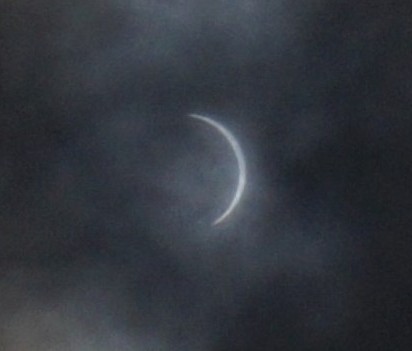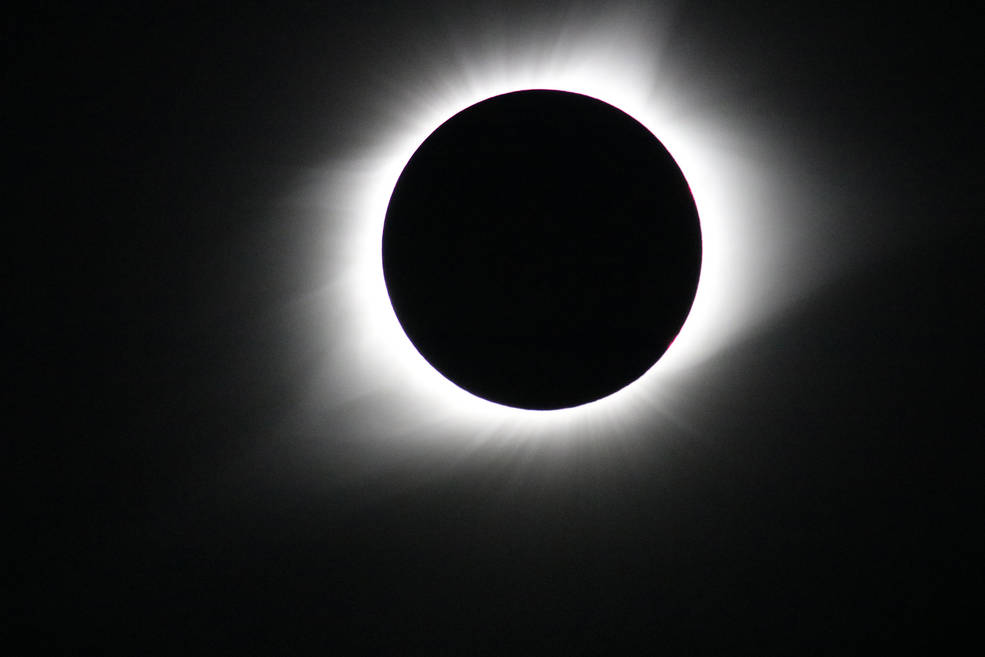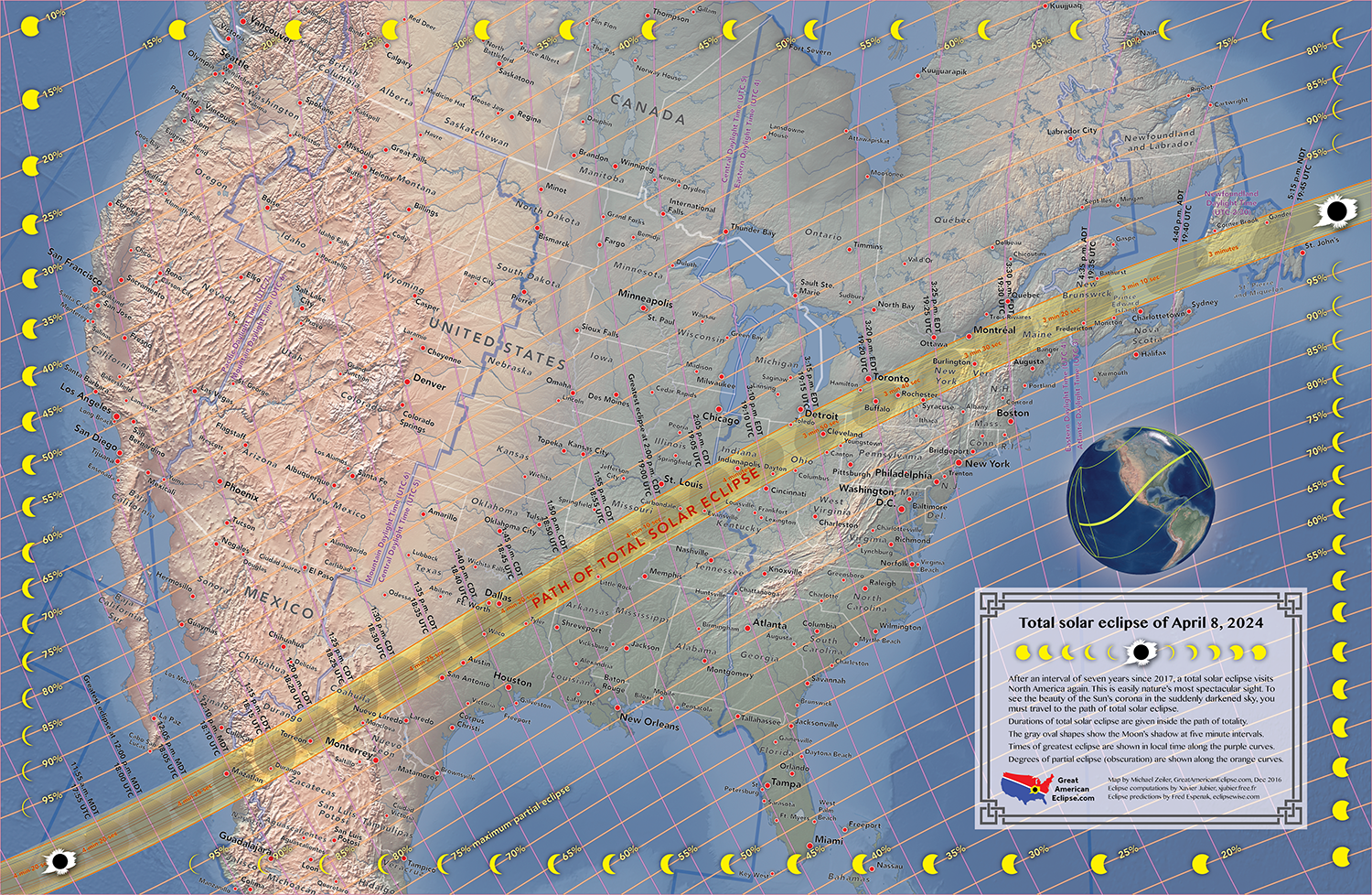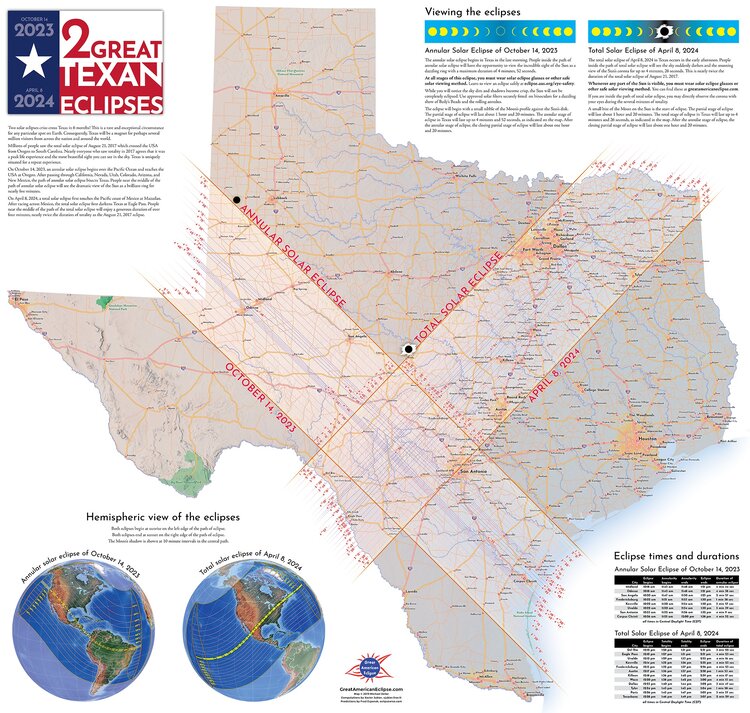The most recent Total Solar Eclipse seen in the United States was in 2017. This one tracked across the United States from the Pacific Coast to the Atlantic Coast Aug. 21, 2017.
The first photo is from a site near the eastern Kansas state line. Unfortunately, clouds were present for much of the day. The thin crescent photo presented is from my camera. The darkness that descended on the field near the Rosencras Airport was a sure sign of the total eclipse. The darkness that surrounded us that day due to the eclipse was absolutely amazing.
The second photo is from NASA of the same eclipse. Obviously, they had a better vantage point.
The third photo is from www.greatamericaneclipse.com showing the eclipse path in 2024.
Annular Solar Eclipse: Oct. 14, 2023
An annular solar eclipse will be visible around the San Antonio area Oct. 14, 2023. An annular eclipse occurs when the Sun and Moon are exactly in line with the Earth, but the apparent size of the Moon is smaller than that of the Sun. Hence the Sun appears as a very bright ring, or annulus, surrounding the dark disk of the Moon as the Moon passes in front of the Sun. I will surely be magnificient.
The annular solar eclipse begins over the Pacific Ocean Oct. 14, 2023, and reaches the USA at Oregon. After passing through California, Nevada, Utah, Colorado, Arizona, and New Mexico, the path of annular solar eclipse bisects Texas. People near the middle of the path of annular solar eclipse will see the dramatic view of the Sun as a brilliant ring for nearly five minutes.
From my research, the best spot for me to go is either just south of Lost Maples State Natural Area north of Vanderpool or along Hwy. 337 just east of Vanderpool. The eclipse starts at 15:22 UTC. It hits maximum at 16:49 and ends maximum at 16:54. The whole thing is over by 18:30. Now what the heck is UTC time? Best as I can tell our CST clocks are six hours behind UTC time. So that means I need to be in place by 10:30 am. But I haven't taken into account Daylight Savings Time.
For the rest of you'll, the eclipse path heads down south of San Antonio.
Total Solar Eclipse: April 8, 2024
A total solar eclipse will be visible around the Austin area April 8, 2024. I intend to be there, too. A total eclipse of the Sun occurs when the Moon completely hides the solar surface or photosphere and thereby cuts off all direct rays of sunlight from the observer. From the first one I attended, I can tell you that is extraordinary.
The total solar eclipse first touches the Pacific coast of Mexico at Mazatlan April 8, 2024. After racing across Mexico, the total solar eclipse first darkens Texas at Eagle Pass. People near the middle of the path of the total solar eclipse will enjoy a generous duration of over four minutes, nearly twice the duration of totality as the Aug. 21, 2017 eclipse.
The start of eclipse is at 17:17 UTC. Start of total eclipse 18:34. The maximum eclipse is at 18:36. The end of total eclipse is 18:38. The final end of eclipse is at 19:57. Again, assuming I have UTC to CST conversion correct, I need to be floating on Lake Buchanan at 2:30. Okay, Daylight Savings Time is not yet taken into account. Yes, the eclipse goes right across the lake. I suspect there's going to be a lot of boats out there.
See more at www.greatamericaneclipse.com/april-8-2024/

This is my photo of the total solar eclipse Aug. 21, 2017. Yeah, I know it's not total, but the clouds that day were a little too much and I got what I could.

This NASA photo was taken during the total solar eclipse Aug. 21, 2017. Credits: NASA/Gopalswamy

This is a map of the path of the total eclipse in 2024. Credit: greatamericaneclipse.com

This is a map of the path of the annular eclipse in 2023 and total eclipse in 2024 as they will cross Texas. Credit: greatamericaneclipse.com